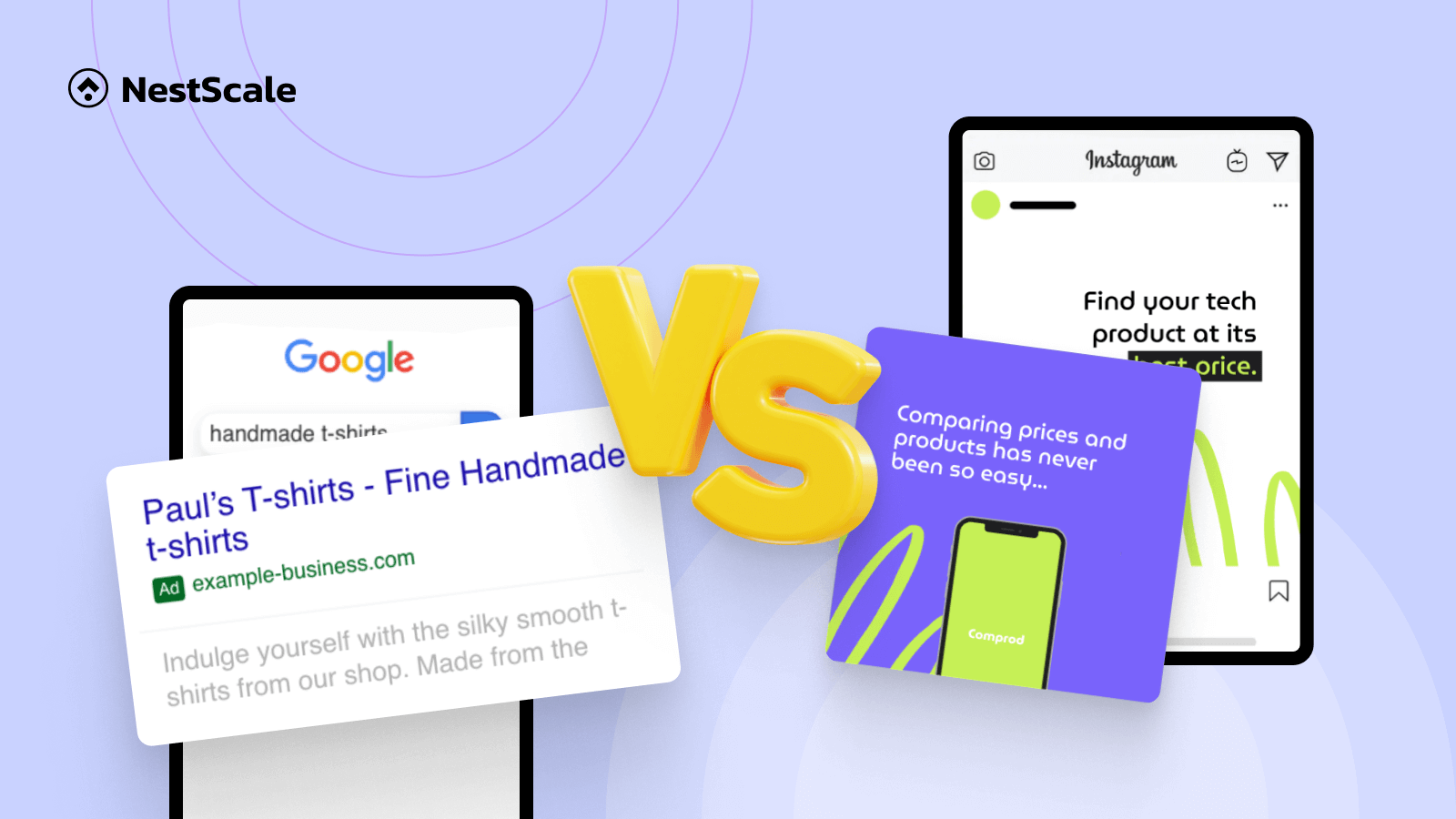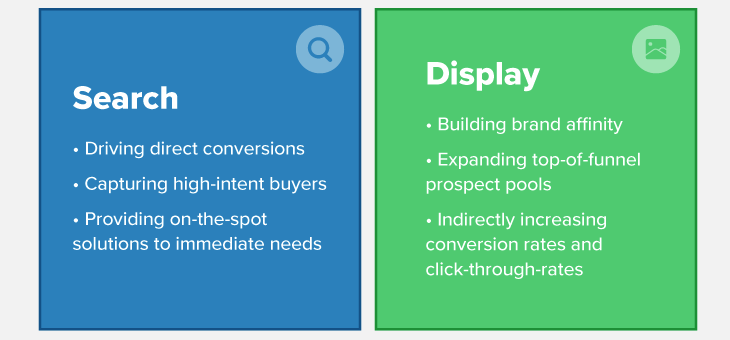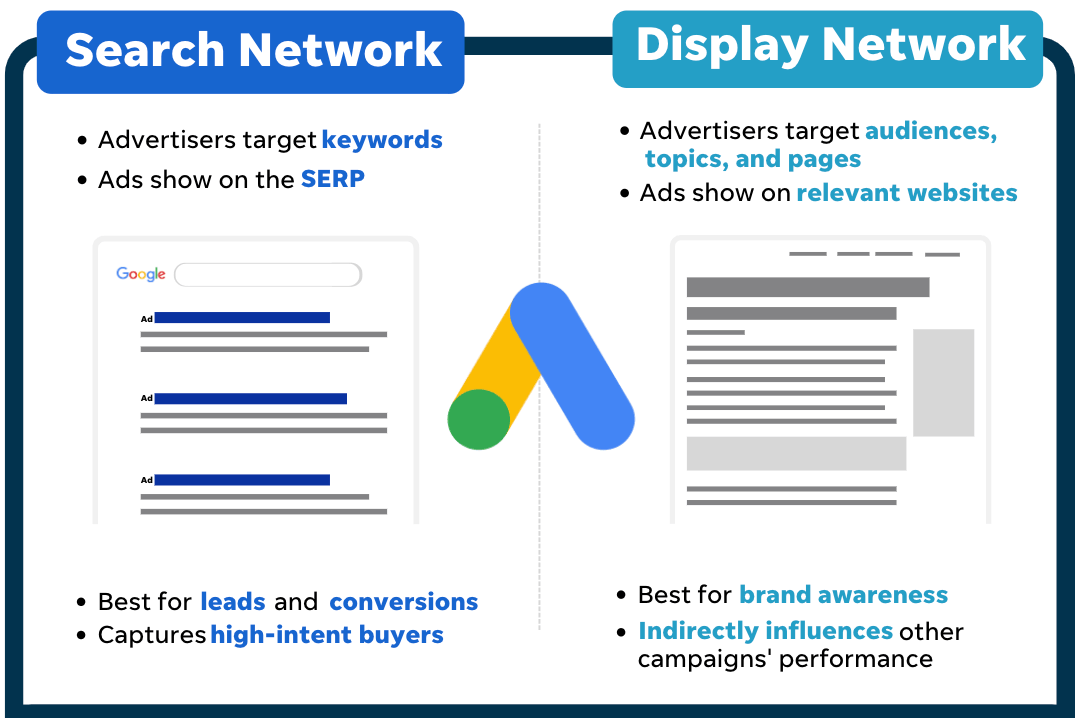Display ads are visual banners on websites, while search ads appear in search engine results. Both types target users differently.
Display ads use images, videos, and graphics to capture attention. They are shown on websites, apps, and social media. These ads are great for brand awareness and retargeting. Search ads, on the other hand, appear when users search for specific keywords.
They are text-based and highly relevant to the user’s query. Search ads are ideal for capturing intent and driving conversions. Businesses should choose the type of ad based on their marketing goals. Both have unique strengths and can be used together for a comprehensive digital marketing strategy.
Introduction To Display And Search Ads
Display Ads visually engage users across various websites. Search Ads target users actively seeking specific information. Both offer unique benefits for digital marketing strategies.
The Basics Of Display Advertising
Display ads appear on websites. They use images, videos, or banners. These ads attract attention with visuals. They can show up on various sites. This helps reach a broad audience. Display ads are great for brand awareness. They can be eye-catching and memorable. Targeting is based on user behavior and interests.
The Fundamentals Of Search Advertising
Search ads appear in search engine results. They show up when users search for keywords. These ads are text-based and relevant. Search ads target users with specific queries. They aim to meet immediate needs. Keywords play a crucial role here. Search ads drive traffic and conversions. They are cost-effective and measurable.

Credit: nestscale.com
Key Differences Between Display And Search Ads
Display ads use images and videos. They catch people’s eyes. Search ads show up with search results. They target people looking for something specific. Display ads are about getting attention. Search ads focus on user intent.
Display ads appear on websites, apps, and social media. They have a broad reach. Search ads show up on search engine results pages. They reach users who are searching for specific keywords. Display ads are everywhere online. Search ads are on search engines.
Display ads often use cost-per-thousand-impressions (CPM). Advertisers pay for every 1,000 views. Search ads usually work on a pay-per-click (PPC) model. Advertisers pay when someone clicks the ad. Display ads can be cheaper but less targeted. Search ads might cost more per click but are highly targeted.
Advantages Of Display Ads
Display ads are great for brand awareness. They show your brand to many people. This helps people remember your brand. Display ads can be seen on websites, apps, and videos. This boosts your brand visibility across different platforms.
Display ads offer creative flexibility. You can use images, videos, and animations. This makes the ads more engaging. Creative ads attract more attention. This helps in making a lasting impression on the audience.
There are many audience targeting options with display ads. You can target by age, location, interests, and more. This ensures that your ads reach the right people. Better targeting leads to better results.
Advantages Of Search Ads
Search ads offer immediate visibility on search engine results, targeting users actively seeking specific products or services. They often yield higher conversion rates compared to display ads, which focus on broader brand awareness.
High Intent Targeting
Search ads reach users actively searching for specific keywords. These users often have a high purchase intent. This means they are more likely to convert. This makes search ads very effective for driving sales.
Immediate Visibility
Search ads appear at the top of search results. Users see them right away. This provides instant visibility for your brand. You don’t have to wait for organic ranking. This can lead to quick traffic and conversions.
Pay-per-click Efficiency
You only pay when someone clicks on your ad. This makes search ads cost-effective. You can control your budget easily. It allows for better return on investment. This ensures you get value for your money.
Analyzing Roi For Display Ads
Success can be measured through various metrics. Click-through rate (CTR) is a key metric. Conversion rate tells how many clicks turn into actions. Cost per acquisition (CPA) shows how much each conversion costs. Return on Ad Spend (ROAS) measures revenue gained per dollar spent. Impressions reflect the number of times ads are seen. Engagement rate indicates user interaction with ads.
Target audience impacts ROI significantly. Ad placement can affect visibility and engagement. Creative quality influences user interest. Bidding strategy determines ad costs. Seasonality can change ad performance. Competitors’ actions might affect ad visibility. Ad frequency can either engage or annoy users. Landing page relevance is crucial for conversions.

Credit: www.wordstream.com
Analyzing Roi For Search Ads
Tracking conversions is key to understanding ROI. Use tools like Google Analytics. They help in tracking clicks and sales. Set up goals in your analytics account. Goals show if users complete desired actions. Always track phone calls and form submissions. These actions are important too.
Optimization improves ROI. Use negative keywords to filter out unwanted clicks. This saves money. A/B testing helps find the best ads. Test different headlines and descriptions. Look at click-through rates to judge success. Ad extensions can improve performance. They make ads more visible. Optimize landing pages for faster load times. This keeps users engaged. Faster pages lead to more conversions.

Credit: megadigital.ai
Frequently Asked Questions
Are Display Ads Better Than Search Ads?
Display ads are better for brand awareness and reaching a broad audience. Search ads excel in targeting intent-based keywords, capturing potential customers actively seeking products or services. Both have unique advantages depending on your marketing goals.
What Is The Benefit Of Display Advertising Over Search Advertising?
Display advertising boosts brand awareness by reaching a broader audience. It uses visuals to grab attention quickly.
What Are Disadvantages Of Display Ads Over Search?
Display ads often have lower click-through rates. They can be perceived as intrusive. Targeting might be less precise compared to search ads. Conversion rates tend to be lower. They rely heavily on visual appeal, which might not always capture user intent effectively.
What Is Google Search Ads And Display Ads?
Google Search Ads appear on search results pages, targeting users actively searching for specific keywords. Google Display Ads appear on websites within the Google Display Network, targeting users based on interests and browsing behavior. Both help increase visibility and drive traffic.
Conclusion
Choosing between display ads and search ads depends on your marketing goals. Display ads boost brand awareness, while search ads drive targeted traffic. Both have unique benefits, so consider your objectives and budget. Combining both strategies can maximize your online presence and ROI.
Make an informed choice to enhance your digital marketing efforts.
